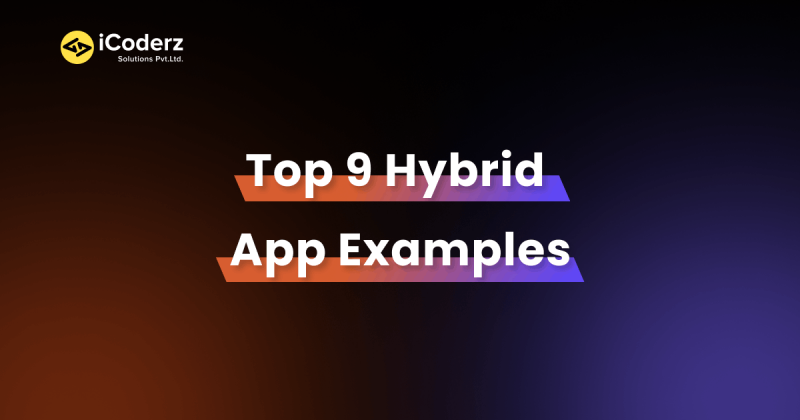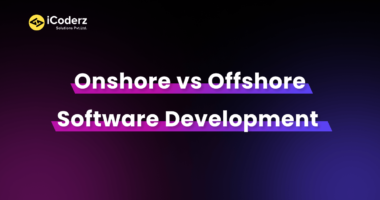Table of Contents
Bored of using outdated mobile apps that offer limited features? It’s time to change your view toward mobile apps with these 9 Top Hybrid App Examples! In today’s fast-paced world, having a user-friendly and feature-rich app is essential. And what better way to achieve that than by choosing a hybrid app!! Whether you’re an avid gamer or simply looking for some entertainment on the go, these hybrid apps are sure to impress. So sit back, relax, and get ready to explore some game-changing apps that will take your mobile experience to the next level!
What is Hybrid App Development?
A hybrid app is a mobile app that contains a mix of native code and web code. Hybrid apps are created utilizing native containers and web technologies like HTML, CSS, and JavaScript so they may be distributed to different app stores.
While hybrid apps offer the benefit of being able to target multiple platforms with a single codebase, they also come with some challenges. For example, because hybrid apps rely on web view components, they can be slower and less responsive than native apps. Additionally, certain features (such as access to device hardware) may not be available to Hybrid App Development.
9 Top Hybrid App Examples for 2023

Uber Technologies, Inc., based in San Francisco, offers freight transportation (18% of revenues), food delivery (34% of revenues), package delivery (34% of revenues,) and ride-hailing (48% of revenues). At the time of the booking, Uber determines the prices, which are dynamically priced according to local availability and demand and are quoted to the customer in advance. Uber also earns a commission from each booking. It operates in around 70 countries and 10,000 cities, creating an average of 23 million trips daily with 5.4 million active drivers and couriers worldwide and 131 million monthly active consumers.
Here’s how Uber utilizes the hybrid app approach:
- User Interface:
The Uber app’s user interface is built using web technologies. HTML is used to define the structure of the app, CSS is used for styling, and JavaScript handles interactivity and logic. This allows developers to create a consistent user experience across different platforms while leveraging their existing web development skills.
- Native Container
To make the app installable and run on mobile devices, the web-based code is encapsulated within a native container. This container is essentially a WebView, which is a native component that renders web content within a mobile app. The WebView acts as a bridge between the web code and the device’s native capabilities, enabling access to devise features like GPS, camera, and push notifications.
Planning to Build an On-demand Taxi Booking App?
- Platform-specific Integration
While the core of the app is built using web technologies, certain functionalities require platform-specific integration. For example, the Uber app needs to access a user’s location information to provide accurate ride estimates and match them with nearby drivers. This integration is accomplished using platform-specific APIs provided by the operating system, which can be accessed through the WebView and JavaScript interfaces.
- App Distribution
The hybrid nature of the Uber app allows it to be distributed through app stores like the Apple App Store and Google Play Store. Users can download and install the app like any other native application, enjoying the convenience of accessing Uber’s services directly from their mobile devices.
By leveraging the hybrid app approach, Uber can maintain a single codebase while delivering a consistent user experience across different platforms. This helps streamline development and deployment processes, reducing the time and effort required to support multiple operating systems.
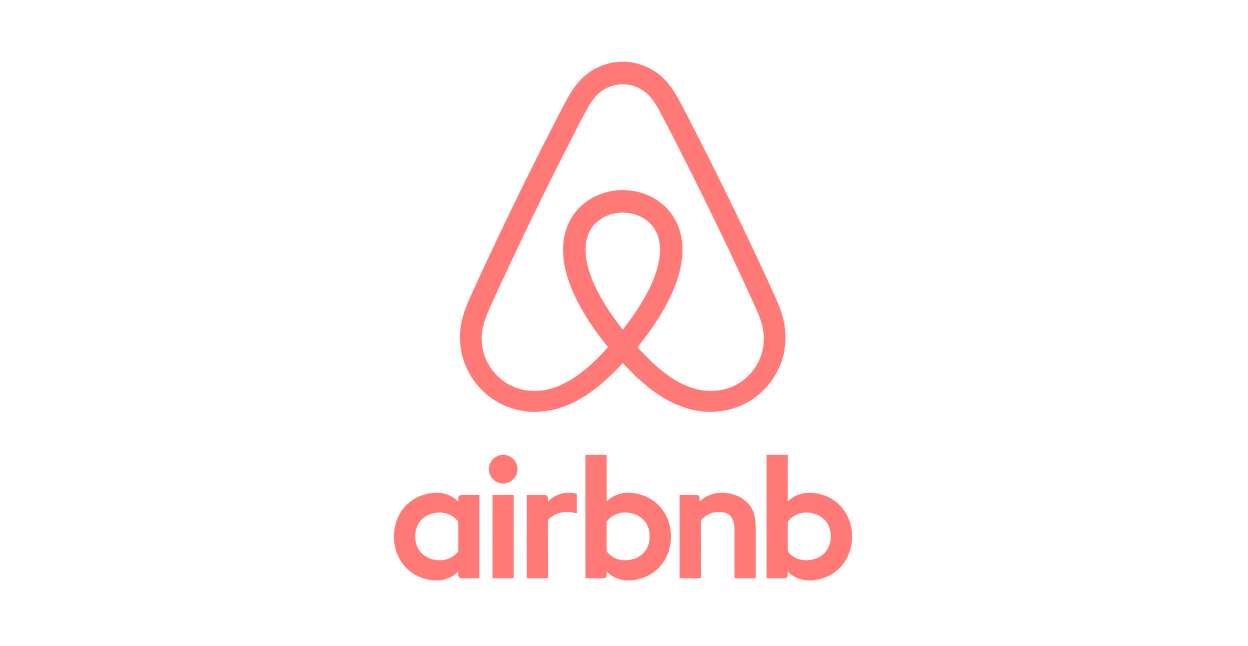
Airbnb, Inc. is an American corporation headquartered in San Francisco that operates an online marketplace for short- and long-term homestays and experiences. The company serves as a broker and takes a commission on each reservation. Brian Chesky, Nathan Blecharczyk, and Joe Gebbia launched the company in 2008. The company’s entire name, AirBedandBreakfast.com, is shortened to Airbnb. The company is credited with revolutionizing the tourism industry. Still, it has also been heavily criticized by residents of tourist hotspot towns like Barcelona and Venice for allowing an unsustainable growth in property rents and for lack of control.
Here’s how Airbnb employs the hybrid app model:
- User Interface:
The Airbnb app’s user interface is built using web technologies such as HTML, CSS, and JavaScript. These technologies allow Hybrid App Developers to create responsive and interactive interfaces that can adapt to different screen sizes and resolutions.
- Native Container:
To make the app accessible on mobile devices, the web-based code is wrapped within a native container. This container, commonly referred to as a WebView, is a native component that renders web content within a mobile app. It acts as a bridge between the web code and the device’s native capabilities.
- Platform-specific Integration:
While the core functionality of the Airbnb app is developed using web technologies, certain features require platform-specific integration. For instance, accessing the device’s camera or location services may be necessary for uploading property photos or providing location-based search results. This integration is achieved through platform-specific APIs, which can be accessed using JavaScript interfaces.
- Offline Capabilities:
To enhance user experience, the Airbnb app employs techniques to enable offline functionality. By leveraging technologies like local storage and caching, the app can store certain data and content locally on the device. This allows users to access information and perform certain tasks even when they have limited or no internet connectivity.
- App Distribution:
Like native apps, the hybrid Airbnb app can be distributed through popular app stores such as the Apple App Store and Google Play Store. Users can download and install the app on their devices, providing them with a convenient way to access Airbnb’s services.
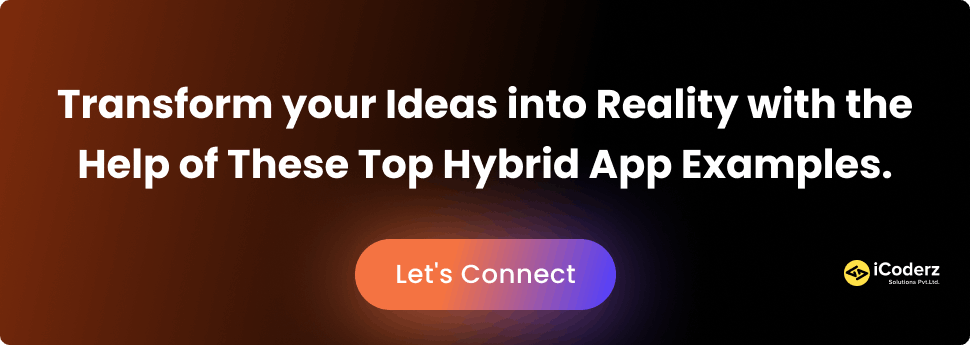
By adopting a hybrid app approach, Airbnb can maintain a single codebase, reducing the development time and effort required to support multiple platforms. This allows them to provide a consistent user experience across different operating systems, making it easier for users to search, book, and manage accommodations using their preferred devices.

Instagram is a social media platform where users may share and publish photos and videos. The American business Meta Platforms runs it. The software allows users to submit media that may be edited with filters, organized using hashtags, and classified by location. Public or pre-approved followers may share posts. Viewing popular content, such as photographs, following other users to add their content to a personal feed, and browsing other users’ content by tag and location are all options available to users.
Let’s explore how Instagram incorporates the hybrid app model:
- User Interface
Instagram’s user interface is primarily built using native technologies specific to each platform. This ensures a smooth and optimized user experience that adheres to the iOS and Android design guidelines. However, some sections of the app, such as user profiles, comments, and notifications, may utilize web technologies like HTML, CSS, and JavaScript to render content and provide interactivity.
- Web Views
Instagram incorporates web views within the native app to display external content or certain sections that can benefit from web-based rendering. For example, when viewing external websites or embedded content within a post, Instagram uses a web view to load and display that content. This allows for greater flexibility and compatibility when presenting web-based elements within the native app environment.
- Hybrid Features
Instagram also includes hybrid features to leverage web technologies for specific functionalities. For instance, the Explore tab, which showcases personalized content to users, may utilize a combination of native components and web views. The content recommendations and algorithms are processed server-side and delivered through web-based elements within the app.
- Progressive Web App (PWA)
Although Instagram primarily functions as a native app, it also offers a Progressive Web App (PWA) version. A PWA is a hybrid approach that allows users to access web-based versions of the app through a browser on their mobile devices. The PWA version of Instagram offers a scaled-down version of the app with limited functionalities, allowing users to browse and interact with posts without installing the native app.
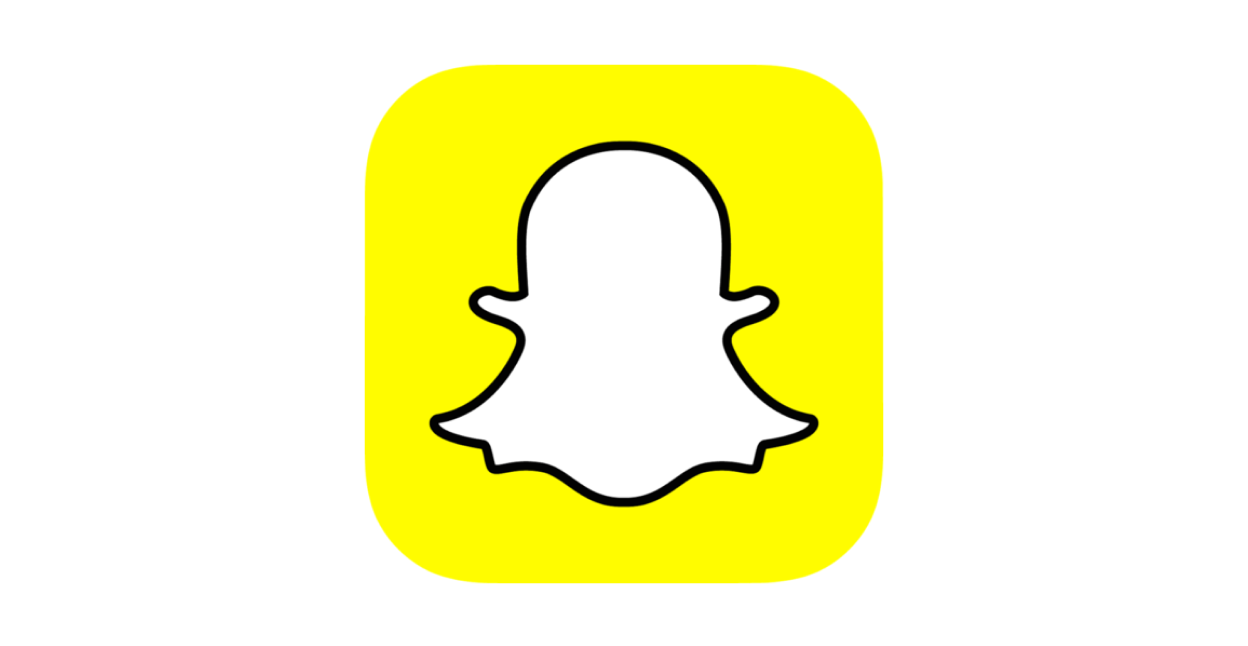
Snap Inc., formerly known as Snapchat, is a multi-media instant messaging service and software company based in the United States. One of Snapchat’s distinguishing features is that photographs and messages are typically only available for a limited time before they are no longer seen by their recipients. The app has developed from its initial focus on peer-to-peer photo sharing to now feature users’ “Stories” with 24 hours of chronological content as well as “Discover,” which enables businesses to make short-form, ad-supported content. It also allows users to keep images in a password-protected “my eyes only” section. According to reports, it has also included a limited amount of end-to-end encryption, with ambitions to employ it more widely in the future.
Let’s explore how Snapchat incorporates the hybrid app model:
- User Interface
Snapchat’s user interface is predominantly built using native technologies specific to each platform, such as iOS and Android. This ensures a seamless and optimized user experience that aligns with the design guidelines of each operating system. Native technologies allow for better performance and integration with device features.
- Web View
Snapchat may utilize web views within the native app to display certain types of content or sections that benefit from web-based rendering. For example, when users view external links or content from Discover partners, a web view is used to load and display that content. This approach allows Snapchat to provide a consistent browsing experience within the app.
- Hybrid Features
Snapchat may incorporate hybrid features that leverage web technologies for specific functionalities. For instance, the Snap Map, which shows the location of friends on a map, may use a combination of native components and web views. The map itself could be rendered using web technologies while integrating with the native app for real-time location updates and interactions.
- Augmented Reality (AR)
Snapchat is known for its extensive use of augmented reality effects and filters. While the core AR functionality is typically implemented using native technologies, some aspects, like filter creation and management, may involve web-based tools and interfaces. This allows for flexibility and easier iteration of AR effects.
- Progressive Web App (PWA)
Snapchat does not offer a Progressive Web App (PWA) version at the time of my knowledge cutoff in September 2021. However, it is worth noting that Snapchat has experimented with web-based experiences and mini-apps called Snap Minis, which can be embedded within Snapchat and offer specific functionalities. While not a traditional PWA, Snap Minis provide a hybrid-like experience by incorporating web technologies within the native app environment.
Snapchat’s primary focus is on delivering a native app experience, but it may employ hybrid elements to leverage web technologies for specific features and content rendering. This approach allows for flexibility, compatibility, and easier integration of web-based content within the app’s native framework.

The US IT giant Meta owns the freeware, cross-platform, centralized instant messaging (IM), and voice-over-IP (VoIP) service WhatsApp (also known as WhatsApp Messenger), which is accessible worldwide. In addition to text and voice messages, phone chats, and video calls, it enables users to exchange pictures, documents, user locations, and other content. WhatsApp’s client program is accessible on PCs and functions on mobile devices. You must have a mobile phone number to sign up for the program. In January 2018, WhatsApp created a separate business app called WhatsApp Business that may interact with the standard WhatsApp client.
Here’s how WhatsApp incorporates the hybrid app model:
- User Interface
WhatsApp’s user interface is primarily built using native technologies specific to each platform, such as iOS and Android. This ensures a consistent and optimized user experience that aligns with the design principles and guidelines of each operating system. Native technologies offer better performance and integration with device features.
- WebView Integration
WhatsApp may utilize WebView components within the native app to display certain types of content. For example, when users open links shared in chats, a WebView is used to render and display the web page. This allows users to view web content without leaving the app, providing a seamless browsing experience.
- Web-based Features
While the core messaging functionalities of WhatsApp are implemented natively, some features may leverage web technologies. For instance, WhatsApp Web and the desktop application enable users to access their conversations and send messages from a web browser. These web-based interfaces utilize web technologies like HTML, CSS, and JavaScript to mirror the user’s conversations from their mobile device.
- Background Processes
WhatsApp incorporates background processes to enable efficient message delivery and synchronization. These processes run in the background even when the app is not actively in use. Hybrid-like techniques, such as background sync, may be used to ensure smooth message transmission and retrieval while conserving device resources.
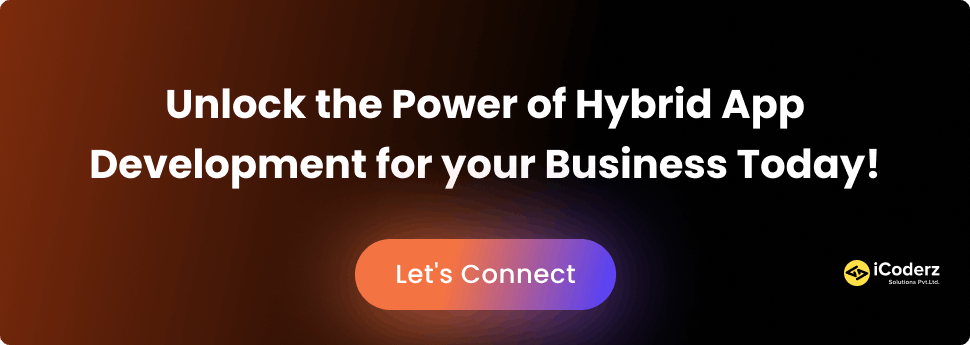
- App Distribution
WhatsApp is primarily distributed as a native app through popular app stores like the Apple App Store and Google Play Store. This allows users to download and install the app on their devices, providing them with direct access to WhatsApp’s messaging services.
While WhatsApp predominantly operates as a native app, it incorporates hybrid elements like WebView integration and web-based features to enhance certain functionalities and provide a seamless user experience. These hybrid approaches help WhatsApp maintain its wide availability across different platforms while leveraging the performance and capabilities of native apps.

Google Maps is an online mapping platform and consumer application that is offered by Google. It provides route planning for travel by foot, car, bike, air (in beta), and public transportation as well as satellite imagery, aerial photography, street maps, 360-degree interactive panorama views of streets (Street View), and real-time traffic conditions. By 2020, Google Maps would be used by more than a billion people each month.
Let’s explore how Google Maps incorporates the hybrid app model:
- User Interface:
The user interface of Google Maps is primarily built using native technologies. It is optimized for each platform, ensuring a consistent and intuitive user experience following the design guidelines of iOS and Android. Native technologies allow for smooth performance and deep integration with device capabilities.
- WebView Integration
Google Maps may utilize WebView components within the native app to display certain types of content or provide web-based functionalities. For example, when users access external links or view certain embedded content, a WebView is used to load and render the web-based content. This allows for seamless browsing and interaction within the app.
- Web-based Data
Google Maps leverages web-based data and services to provide real-time information, such as traffic updates, satellite imagery, and points of interest. While the core functionality of rendering the map itself is done natively, the app may rely on web-based APIs and services to fetch and display data like traffic conditions or nearby locations.
- Progressive Web App (PWA)
While the primary Google Maps experience is through the native mobile app, Google also offers a Progressive Web App (PWA) version of Google Maps. The PWA allows users to access a scaled-down version of Google Maps through a web browser on their mobile devices. Although it may not provide the full functionality of the native app, it offers basic map navigation and search capabilities.
- Cross-platform Development
Google Maps utilizes cross-platform development frameworks like Flutter to build and maintain a single codebase across different platforms. Flutter allows developers to write code once and deploy it on both iOS and Android, reducing the development time and effort required to support multiple platforms.
While Google Maps primarily operates as a native app, it incorporates hybrid elements like WebView integration, web-based data services, and the availability of a Progressive Web App Development. These approaches help Google Maps deliver a comprehensive and consistent mapping experience across various platforms while leveraging the benefits of both native and web technologies.

Spotify provides digitally copyright-restricted audio content from record labels and media organizations, including more than 100 million songs and 5 million podcasts. Daniel Ek and Martin Lorentzon founded Spotify, a privately held Swedish provider of media services including audio streaming, on April 23, 2006. As of March 2023, it had over 527 million monthly active users, including 210 million paid members, making it one of the biggest music streaming service providers. Spotify Technology S.A., a holding company with headquarters in Luxembourg City, trades its shares on the New York Stock Exchange as American depositary receipts.
Here’s how Spotify incorporates the hybrid app model:
- User Interface
The user interface of the Spotify app is primarily built using native technologies specific to each platform, such as iOS and Android. This ensures a seamless and optimized user experience that adheres to the design principles and guidelines of each operating system. Native technologies provide better performance and integration with device features.
- WebView Integration
Spotify may utilize WebView components within the native app to display certain types of content or provide web-based functionalities. For example, when users access artist profiles or view external content, a WebView is used to load and display the web-based content. This allows for consistent browsing and interaction within the app.
- Web-based Features
While the core music streaming and playback functionalities of Spotify are implemented natively, some features may leverage web technologies. For instance, Spotify’s web player allows users to stream music directly from a web browser on their desktop or laptop. This web-based interface utilizes web technologies like HTML, CSS, and JavaScript to provide a familiar playback experience.
- Progressive Web App (PWA)
Spotify does not offer a Progressive Web App (PWA) version at the time of my knowledge cutoff in September 2021. However, it is worth noting that Spotify has experimented with web-based experiences. For example, Spotify Stations is a standalone app that provides a simplified and radio-like music streaming experience, and it can be considered a hybrid-like approach with web-based elements.
- App Distribution
Spotify is primarily distributed as a native app through popular app stores like the Apple App Store and Google Play Store. Users can download and install the app on their devices, gaining direct access to Spotify’s music streaming services.
While Spotify’s core functionality is implemented natively, it incorporates hybrid elements like WebView integration and web-based features to enhance certain functionalities and provide a consistent user experience across platforms. These hybrid approaches help Spotify maintain wide availability across different operating systems while leveraging the performance and capabilities of native apps.

Netflix is an American over-the-top subscription streaming service for video content that is owned and run by Netflix, Inc., a business with headquarters in Los Gatos, California. It provides a variety of genres of films and television shows, and it is multilingual.
Netflix, a leading streaming service for movies and TV shows, primarily operates as a native mobile application. As of my knowledge cutoff in September 2021, Netflix does not utilize a hybrid app approach. Instead, it focuses on developing and optimizing its app natively for each platform, such as iOS and Android.
However, it’s worth mentioning that Netflix does offer a web-based version accessible through browsers on desktop and laptop computers. While this web interface provides a similar streaming experience, it is distinct from the native app and primarily serves users who access Netflix on non-mobile platforms.
Overall, while Netflix does not operate as a hybrid app, it focuses on native app development to ensure a premium streaming experience for its users on mobile devices.
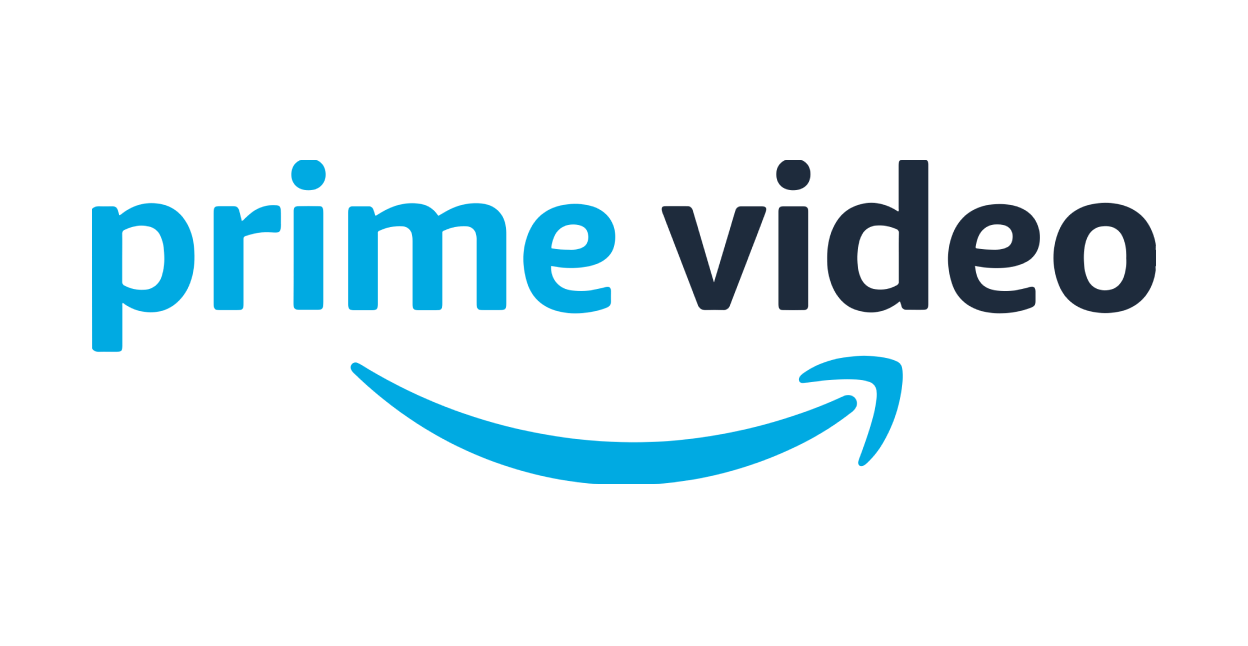
An American subscription video-on-demand over-the-top streaming and rental service provided by Amazon, known simply as Prime Video, can be accessed separately or as part of a Prime membership. The service offers material from external sources, content add-ons, live sporting events, video rental, and buying options, as well as films and television shows that are created by Amazon Studios and MGM Holdings or licensed to Amazon as Amazon Originals.
Amazon Prime Video, a popular streaming service for movies and TV shows, primarily operates as a native mobile application. While I don’t have specific information regarding Amazon Prime Video’s development approach after my knowledge cutoff in September 2021, Amazon Prime Video likely utilizes a primarily native app model to deliver its services. The native app model allows Amazon Prime Video to provide a seamless and optimized user experience on iOS and Android platforms. Native technologies offer better performance, deep integration with device features, and adherence to platform-specific design guidelines.
While Amazon Prime Video may incorporate some hybrid elements, such as web views for displaying certain content or web-based functionalities, the core streaming experience is likely delivered natively. This approach ensures a consistent and high-quality user experience across different platforms while leveraging the benefits of native app development.
Comparison Between Native and Hybrid Apps
- The debate of whether to develop a native app or a hybrid app has been around for some time. There are pros and cons to each approach, but ultimately it comes down to what is best for your specific situation. In this article, we’ll take a look at the key differences between native and hybrid apps so that you can make an informed decision about which approach is right for you.
- Native apps are made specifically for a platform, such as iOS or Android. This implies that they can utilize all of the platform’s features and capabilities. Web technologies (HTML, CSS, and JavaScript) are used to create hybrid apps, which are then wrapped in a native container to enable cross-platform deployment.
- One of the key advantages of native apps is that they provide a better user experience since they are designed specifically for the platform they are running on. All of the device’s functions and functionalities, including the camera, GPS, and push notifications, are also accessible to native apps.
- The main advantage of hybrid apps is that they are much easier and faster to develop than native apps since they only need to be built once using web technologies. Hybrid apps can also be deployed to multiple platforms with very little modification required.
- So, which approach is right for you? It depends on your specific needs and requirements. If you need an app that takes full advantage of all the features and capabilities of a particular platform, then a native app is probably.
ALSO READ: Difference Between Native Apps Vs Hybrid Mobile Apps
Challenges When Building a Hybrid App
- When building a hybrid app, one of the main challenges is ensuring that the app functions correctly on both iOS and Android devices. This can be difficult to do if you’re not familiar with both operating systems.
- Another challenge is getting the app approved by both Apple’s App Store and Google Play. This can be a time-consuming process, and there’s no guarantee that your app will be approved. When compared to native apps, hybrid apps might occasionally be slower and less responsive.
Here are Some Tips for Building a Successful Hybrid App:
Building a successful Hybrid App Development requires careful planning, attention to detail, and consideration of various factors. Here are some tips to help you create a successful hybrid app:
- Define Your Goals and Target Audience
Determine your app’s target market and give it a clear purpose. Understand their needs, preferences, and expectations to ensure your app aligns with their requirements.
- Choose the Right Hybrid App Framework
Select a reliable hybrid app development framework, such as React Native, Flutter, or Xamarin. Consider factors like community support, performance, ease of development, and compatibility with your target platforms.
- Design for Multiple Platforms
Since hybrid apps are built to run on different platforms, it’s crucial to design your app with platform-specific guidelines in mind. This ensures a consistent user experience across different devices and operating systems.
- Optimize App Performance
Pay close attention to performance optimization. Optimize loading times, reduce unnecessary network requests, and optimize resource usage to provide a smooth and responsive user experience.
- Native-like User Interface
Strive to create a native-like user interface (UI) that integrates seamlessly with the operating system’s UI conventions. This helps users feel familiar with your app and enhances usability.
- Leverage Device Capabilities
Take advantage of the device’s native capabilities, such as a camera, GPS, accelerometer, and push notifications. Incorporating these features enhances user engagement and makes your app more powerful and functional.
- Test Thoroughly
Testing is essential for any app’s success. Test your app on various devices, platforms, and screen sizes to ensure it functions correctly and looks great across different configurations. Perform rigorous testing for both functionality and performance.
- App Store Optimization (ASO)
Pay attention to ASO techniques to enhance your app’s visibility and discoverability in the app stores. Optimize your app’s name, description, keywords, screenshots, and ratings to attract more users.
- Regular Updates and Maintenance
Continuously update and maintain your hybrid app to address bugs, add new features, and keep up with the evolving mobile landscape. Regular updates demonstrate your commitment to providing a quality experience to your users.
- User Feedback and Analytics
Encourage user feedback and leverage analytics tools to gain insights into user behavior and preferences. Use this data to improve your app, address user concerns, and provide a better overall experience.
By following these tips, you can increase your chances of building a successful hybrid app that delivers a great user experience and achieves your business goals. Remember to stay updated with the latest trends and technologies in the Mobile App Development industry to improve and adapt your app continually.
Conclusion
We hope that we have helped you to understand how hybrid mobile apps work and why they are a great option for businesses. By choosing hybrid apps, developers can create powerful applications quickly and efficiently whilst avoiding the pitfalls of native development. Furthermore, users benefit from faster loading times, better performance, and an overall improved user experience. If you’re looking to get your business up and running with its app, then it might be worth considering creating a hybrid application rather than going down the native route.



